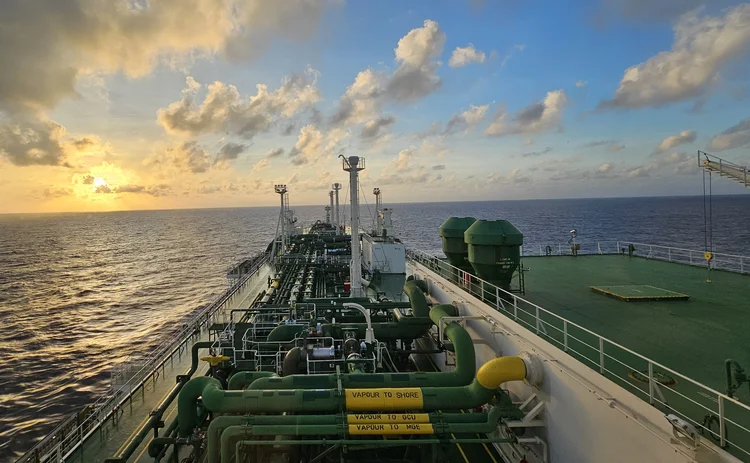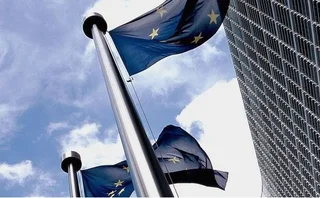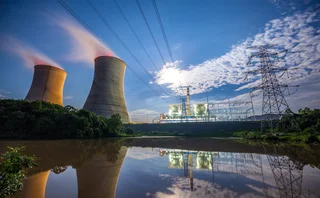LNG trading strategies set to change amid major market shifts
The global LNG market is on the brink of significant changes set to alter trading dynamics and market behaviour, say analysts

The global liquefied natural gas (LNG) market is facing fundamental changes that are likely to cap prices, favour buyers over sellers and result in key changes in market behaviour over the next few years, analysts say.
A variety of factors are contributing to the changing outlook for the LNG market. Most significantly, an unprecedented volume of new LNG export capacity is set to come online between now and 2030, at a time when demand is uncertain. Additionally, big shifts are occurring in both trade flows and price formation, and this is attracting new sorts of players to the market, such as small buyers and LNG aggregators – intermediaries that buy and resell LNG globally. With spot trade and destination-flexible trade growing, market participants can now be more responsive to price signals, leading to more dynamic arbitrages and evolving speculative and hedging opportunities. As a result, both LNG exporters, traders and buyers are now carefully considering their options when it comes to their existing contract optionality, future transaction opportunities and hedging programmes.

While renegotiating existing contracts depends on the specific terms of each contract, analysts agree buyers are now in a stronger negotiating position when it comes to new contracts. This is especially true for upcoming projects, many of which haven’t reached the industry standard of having around 80% of capacity secured in long-term offtake contracts, notes Aldo Spanjer, head of energy strategy at BNP Paribas.
“For example, an important share of upcoming Qatari supply has not been contracted yet,” he says. “This will definitely add an interesting flavour to negotiations as buyers will try to get as much flexibility as possible.”
Branko Pribicevic, London-based head of EMEA power and gas at Macquarie Group, agrees. “We’d expect buyers to have a considerably stronger hand than before in negotiations, and will expect more contractual flexibility,” he says.
One of the biggest influences will be how much new supply comes online in the next five years. According to the International Energy Agency, final investment decisions have been made on around 290 billion cubic metres (bcm) of liquefaction capacity slated to become operational between 2025 and 2030. This is equivalent to around 42% of current capacity. The majority of this will come from the US, which is set to add 151bcm of capacity by 2030, and Qatar, where capacity is forecast to increase by 65bcm by 2030, up from around 105bcm at present (see chart).
In the past, cycles of LNG infrastructure build have tended to create excess supply and lower prices, but none have been as extensive as this upcoming wave. “The difference between this and previous waves is that this is a continuous wave,” says Mike Fulwood, senior research fellow at the Oxford Institute for Energy Studies (OEIS). “We’re looking at five years of surging energy supply, so it could take a while before everything is worked off.”
As a result, analysts expect LNG prices to fall next year. European LNG prices – referenced to the Transfer Title Facility (TTF) hub – which averaged around $11 per million British thermal units (/mmBtu) in 2024 – are expected to average $12.2/mmBtu this year before falling off in 2026, according to Ronald Pinto, a principal insight analyst at data firm Kpler. “For 2026, we anticipate a significant drop in prices, particularly in the second half, as more LNG supply enters the global market,” he says.
As well as weighing on prices, the extra capacity will also accelerate changes in market dynamics, analysts say. The increased dominance of US production – which tends to be destination-flexible and priced against Henry Hub rather than indexed to oil – is increasing contractual flexibility and encouraging secondary trading and spot trading. The US story has revolutionised the LNG market in just 10 years, with US exports moving from zero in 2015 to around 126bcm last year, with the country overtaking Australia and Qatar to become the world’s biggest exporter from 2023 onwards. It currently accounts for around 20% of global LNG supply, a figure predicted to rise to around 33% by 2030, according to Shell.
As its influence grows, spot trading, which now makes up 30% of global LNG trade, is also likely to increase.

“The new LNG capacity coming up is going to create excess cargoes in the marketplace and a lot of them could be traded on the spot market,” predicts Joe Raia, chief commercial officer at Abaxx Exchange, which offers LNG futures contracts based on three regional benchmarks.
The other major trend in physical trade flows has been the increase in demand from Europe as it moves away from Russian pipeline gas following the 2022 invasion of Ukraine. Europe leapfrogged Japan and China to become the biggest LNG importer in 2022 and has remained there since. As a result of this demand, LNG now accounts for more traded volumes than pipeline gas.
Pricing revolution
Amid the dramatic changes in trade flows, there has also been a major shift in the way LNG is priced. In 2024, some 51% of LNG trades were priced against physical gas hubs, up from under 15% in 2005, according to the International Gas Union. Conversely, oil indexation – which was used to price 85% of trades in 2005 – is now used in less than half of LNG trades.
Increasingly, TTF is becoming the global benchmark for gas prices and now accounts for more than 80% of total traded European gas values. Its churn rate – total traded volumes at a hub, divided by its physical demand or throughput – has reached 20 times, according to the OEIS. This compares with around 55 times at the US Henry Hub.
“Whether I talk to a Japanese utility, a European industrial or an upstream producer in Canada, they will have similar questions – what temperature is it in Germany? What are storage levels across Europe? – [because] they are aware their local market is also TTF-related,” says Pribicevic at Macquarie.
Even North American producers who are delivering to local hubs are looking for exposure to the TTF price, or to Asia’s Japan Korea marker (JKM). “US producers are looking to participate more in downstream markets, all the way to exporting LNG to other countries,” says Matt Marshall, Houston-based president of AEGIS CTA, the trading arm of advisory firm AEGIS Hedging.
This is leading some producers to hedge their sales using contracts referenced to TTF, despite receiving the Henry Hub price. Dollar-denominated TTF contracts are now available on the CME, European Energy Exchange and Ice Futures Europe. On the face of it, this type of hedging is a speculative play seeking to exploit potentially higher gas prices in Europe, but Marshall suspects that this might only be part of the story. “What probably happens is that there is a blended formula where these producers are receiving the TTF index price and are hedging with TTF,” he says.
The new LNG capacity coming up is going to create excess cargoes in the marketplace and a lot of them could be traded on the spot market
Joe Raia, Abaxx Exchange
Despite the growth in gas hub volumes, many consumers still favour indexing at least some of their LNG exposure to Brent crude oil prices. “The motivation was that hedgers wanted a more stable price point after what happened after the Russian invasion. TTF indexation would have become pretty costly,” says Janko Lukac, a senior analyst at Moody’s in Frankfurt.
TTF prices jumped from $16/mmbtu in 2021 to $38/mmbtu in 2022 following Russia’s invasion of Ukraine and Europe’s scramble for new sources of gas. Since then, prices have fallen sharply, averaging $13/mmbtu in 2023 and $11/mmbtu in 2024, close to current levels. JKM is also around $11/mmbtu, while Henry Hub spot prices are just over $3/mmbtu, after reaching a high of almost $10/mmbtu in 2022 and sinking to $1.65/mmbtu in 2024.
In addition to oil indexation and pricing against gas hubs, a third option was brought to the table in June 2024 when Abaxx Exchange launched its centrally cleared, physically deliverable futures contracts based on LNG routes, rather than pipeline gas hubs.
“We wanted to create a contract that is directly correlated to molecules from the US Gulf Coast, deliverable into Europe and Asia that reflects the price of waterborne LNG,” Raia says. Unlike bilateral OTC contracts, these contracts have no fixed destination clause. “You have that flexibility to go where the best economics are in your markets, which is different to what the OTC markets offer. And there’s virtually no basis risk because you are trading the actual product that’s on the water,” he says.
Since launch, the contracts have traded and priced the equivalent of around 61 cargoes of LNG.
Changing arbs
Changes to price formation and the increase in spot and destination-flexible trading means market participants can be much more responsive to price signals than was possible in the past, with large LNG firms more able to deliver cargoes where prices are most favourable. As arbitrages become more dynamic, selling and purchasing strategies will follow suit, analysts say.

For example, following the Russian invasion of Ukraine, yawning spreads between Henry Hub and TTF – which blew out to $29.614/mmBtu on June 16, 2022, according to S&P Global – made it a relatively simple exercise to extract value from the transatlantic LNG trade.
At that time, traders would hedge LNG on the water off the US Gulf Coast and deliver to Europe or Asia “and make a very decent margin without a lot of effort”, says Pribicevic. “There was easy premium to hedge out, contingent on funding and creditworthiness,” he says. “In that world, people needed balance sheet capacity in order to operate.”
But as the spread narrowed – it came down to $10/mmBtu for winter 2024–25, and is forecast to be below $5/mmBtu for winter 2025–26 – the game changed and has become more complicated.
Now, with a much tighter Henry Hub/TTF spread, as well as a smaller spread between prices paid under long-term contracts and prevailing prices at TTF, the market has moved to price risk management, adds Pribicevic. “Traders are looking to take advantage of any flexibility in contracts around time or location of delivery, to extract maximum value out of their portfolios,” he says.
As capacity expands, more LNG is likely to find itself traded merchant rather than secured through long-term contracts, say analysts and traders.
“It appears the new projects are satisfied with a smaller amount of contracted off-take capacity [than the historical 80% industry standard], and we should be heading to a more merchant LNG market,” says Pribicevic. “Notably, across greenfield and brownfield/expansion projects, we have seen multiple examples of lower contracted offtake at the time of final investment decision in the US in 2025.”
The flexibility of being able to operate in the spot market versus the security of long-term contracts remains a difficult balance for LNG traders. BP’s recent arbitration case against US LNG exporter Venture Global shows LNG exporters can’t necessarily expect to have the best of both worlds. Venture Global lost the case over its failure to deliver on a long-term gas-supply contract while selling spot cargoes at very high 2022 TTF prices. BP is seeking more than $1 billion in damages plus interest and legal costs, with the final amount to be determined in a separate hearing in 2026.
It appears the new projects are satisfied with a smaller amount of contracted off-take capacity [than the historical 80% industry standard], and we should be heading to a more merchant LNG market
Branko Pribicevic, Macquarie Group
Demand variables
The other major influence on the market’s direction in the next few years will be the level of demand from Asia, say analysts.
The key question is how much demand from Asian buyers is generated by low prices, says Spanjer at BNP Paribas. When the price drops below $13/mmBtu, demand surfaces from Asia outside China. Below $11/mmBtu, “you usually start to see a lot of Chinese buying”.
Chinese demand has been muted in recent years with LNG imports dropping 18% year on year from 58 million metric tonnes (mmt) (around 42bcm) between January and September 2024, to 47.4mmt for the same period in 2025, notes Pinto at Kpler. This is partly down to reduced domestic demand from its power sector, which has been installing renewables at speed, and from its industrial sector, due to lingering uncertainty over its trade with the US. However, increased domestic gas supply has been the main driver behind the decrease in Chinese LNG imports.
Despite this, there are some fairly bullish medium- to long-term global demand forecasts. Shell, for example, puts demand for LNG in a range of 550–610mmt per annum (around 396–439bcm) by 2030 and sees supply failing to meet demand by 2034. By 2040, it sees demand significantly outpacing supply. “More investment is needed to ensure supply can keep up with demand,” its 2025 LNG outlook report concluded.
Similarly, consultancy Wood Mackenzie forecasts LNG demand growing by 56%, or 230 mmt per annum, between 2025 and 2035. “This surge is primarily driven by new LNG supply sources reducing prices and consequently boosting demand,” says Kateryna Filippenko, the company’s research director for global gas markets.
Demand from elsewhere in the region is heterogenous, making forecasting it challenging, Spanjer notes. For example, Indonesia and Malaysia buy to back-fill declining domestic production. The Philippines is buying to diversify its power sector away from coal, while India uses gas in a number of industrial and transportation applications, as well as a feedstock for fertilisers.
However, for most LNG demand from the region, Spanjer sees a ceiling of around $13/mmBtu – “that’s the point where buyers in the region cancel tenders,” he says. Looking ahead to the oversupply expected from late 2026 onwards, “the question is, how quickly can Asian demand absorb these excess volumes?”
Some believe that, as in the US and Europe, gas has the potential to displace coal in Asia, supporting the region’s energy transition. However, analysts are sceptical on both cost and environmental grounds. “There’s so much coal in Asia, and it’s so abundant … that without material policy support [such as carbon pricing], LNG is not competitive in the power stack compared with coal,” says Walt Chancellor, an energy strategist at Macquarie Group in Houston.
At the same time, many countries in the region are following China’s lead, and installing large volumes of cheap renewables. “LNG is being squeezed on both sides,” Chancellor says.
Meanwhile, demand from Japan, currently buoyed by rising electricity demand from data centres, is seen declining gradually from 2032, from around 63mmt annually to around 45mmt by 2050, according to Wood Mackenzie.
Over-reliance on LNG is a strategic vulnerability for Europe. I don’t think that Europe can necessarily count on [the US] as a stable partner
Clark Williams-Derry, Institute for Energy Economics and Financial Analysis
European demand growth looks equally bearish. The Trump administration has strong-armed the European Union into agreeing to take $750 billion of energy imports as part of its draft trade agreement in July. However, aside from the limited levers the EU has to force private companies to increase energy imports, the bloc is already buying as much LNG as it can absorb and, as it continues to build out renewables and improve industrial efficiency, its direction of travel is also towards lower imports.
European policy-makers are also keen not to repeat the mistake of becoming overly dependent on any one energy supplier, as it was with Russian gas, notes Clark Williams-Derry, energy finance analyst at the Institute for Energy Economics and Financial Analysis. “Over-reliance on LNG is a strategic vulnerability for Europe,” he says. “I don’t think that Europe can necessarily count on [the US] as a stable partner.”
Growth in US domestic demand might divert sufficient gas from the LNG markets to crimp supply, argues Lukac at Moody’s. He notes that low prices at Henry Hub in the US over the past year, and expectations of continuing low prices, have spurred investment in petrochemical capacity in the US, while the boom in artificial intelligence is juicing demand for gas for power plants. He says large potential domestic demand growth over the next 15–20 years means “it’s not a given” that US producers will need to dramatically increase export volumes.
However, if any of this local US demand growth doesn’t materialise, the US might struggle to export the extra supply, say analysts. “Ultimately, US cargoes may need to be shut in,” says Chancellor at Macquarie.
“There are a vast number of levers in the global gas market that could maybe steer you to a less hard landing,” says Chancellor. “But when you look at 2027, and particularly 2028, you really have to stretch a number of them to get to a market approximately in balance.”
With additional reporting by Stella Farrington.
More on Gas/LNG
Energy Risk at 30: Learning from the past
Energy Risk looks back at the seminal events and developments that have shaped today’s energy markets
Natural gas/LNG house of the year: ENGIE
Energy Risk Awards 2025: Energy firm signs a string of innovative deals in established and fledgling gas markets
Natural gas/LNG house of the year: ENGIE
ENGIE continues to expand its services to better serve firms in Apac dealing with the challenges of energy risk management and supply
Market shrugs off EC’s plan to change gas benchmark
Dutch TTF prices unmoved, as market participants say they are “not taking it seriously”
Natural gas/LNG house of the year: Engie
Energy Risk Awards 2021: In a volatile market Engie continued to grow its gas and asset management businesses
Dynamic gas models make for better hedges
Study highlights dwindling role of weather in market
Short term, LNG view
Excitement over fast-growing LNG markets shouldn't blind us to the potential risks







